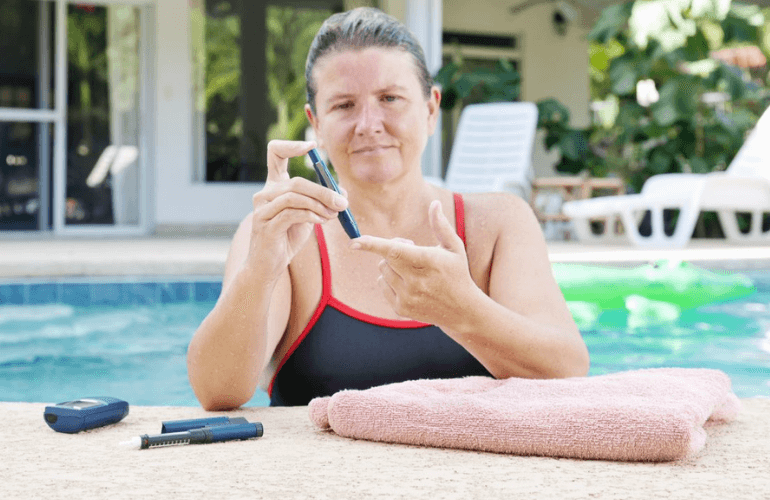5 Tips to Take the Sting out of Finger Pricks
Did you know some people with diabetes check their blood glucose on average five times per day? This of course will vary on the type of diabetes you have and what medications or insulin you take to look after your blood glucose levels.
If you finger prick to check blood glucose levels you could potentially be checking over 1,000 times per year which can be damaging to your fingers. Likewise, when on insulin you can potentially be injecting a needle anywhere from 365 to over 1,800 times per year.
Looking after your fingers is an important part of looking after your diabetes. Knowing what to look for and how to reduce damage, pain and discomfort will ensure your skin remains healthy.
Fingers can get sore, calloused (thick, rough hard skin) and bruised.
Credentialled Diabetes Educator Suzanne Leahy shares some tips on how to keep your skin healthy and reduce damage, pain and discomfort from finger pricks and injections.
1. Where Should I Inject My Finger?
It is best to prick your fingers on the side rather than the ‘pad’ of your fingers.
Why?
You have fewer nerve endings on the sides of your fingers so pain and discomfort will also be reduced.
2. How Often Do I Need to Change My Lancet?
It is recommended that your lancet is changed every time you prick your finger but in reality most people don’t. Try and get into the habit of changing your lancet daily at a minimum.
Why?
Using a dull or blunt needle tears at the skin instead of making a clean hole which can cause pain and discomfort and eventually lead to callous formation (thick, rough hard skin) and black spots (bleeding/bruising).
3. How Deep Should I Inject My Lancet?
Try not to inject the lancet too deep into your finger. Set the depth between two and four on your lancet device.
Why?
Most lancets are spring-loaded which makes the needle slam against your finger. If the needle goes too deep it can cause damage and black spots (bleeding) under the skin. If you already have calluses and black spots you will have to keep increasing how deep the needle needs to go, making the problem even worse.
4. What To Do If You Can't Draw Blood
Do you find it difficult to draw blood, especially during the cold winter months?
Warm your hands first to increase blood supply to the finger tips. Wash them in warm water then hang your hand down to allow the blood to pool in the finger tips. Try not to squeeze vigorously to get enough blood as this can prevent flow, try ‘milking the finger’ instead - squeeze from the base and move up the finger.
Some blood glucose meters can draw blood from other parts of the body. Discuss your options with your diabetes team.
5. What is SecondChance® Sampling
If you have difficulty getting enough blood, a monitor that uses the CONTOUR®NEXT Strips for example, can help. This strip has SecondChance® Sampling which allows you to continue adding more blood for up to 1 minute. This means no wasted strips or having to prick your finger more than once to check your blood glucose level.
Pricking Your Finger Doesn't Have To Be Hard
If you remember these simple tips, you can take the sting out of your finger pricks while managing your diabetes:
- Always wash your hands before checking your blood glucose level
- Change your lancet more frequently, preferably after every blood glucose check, or at a minimum of once per day
- Use the sides of your fingers
- Use all of your fingers, don’t just favour one finger
- Check how deep the needle is set to go into your finger




